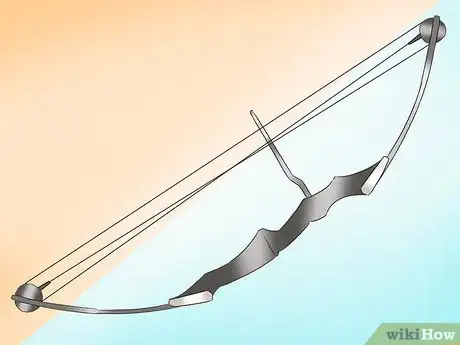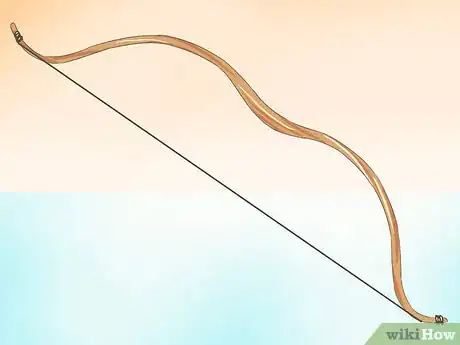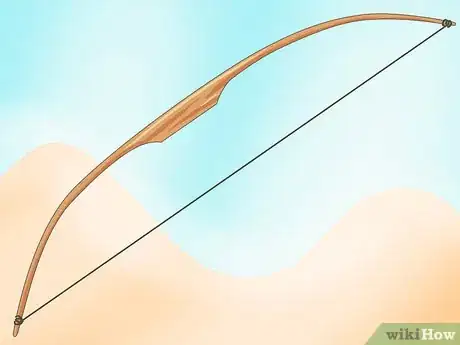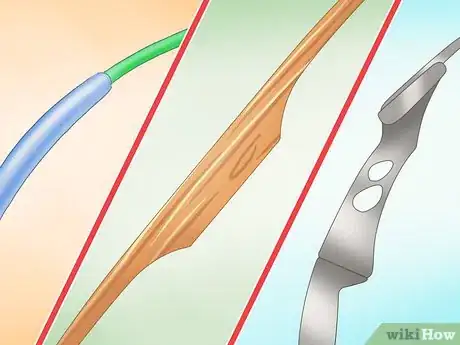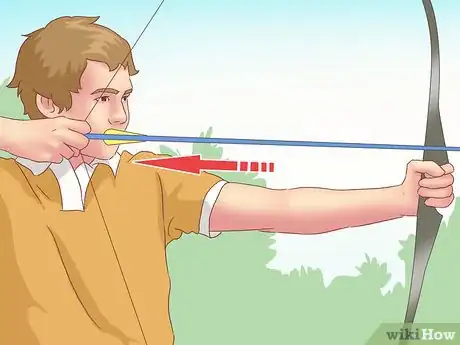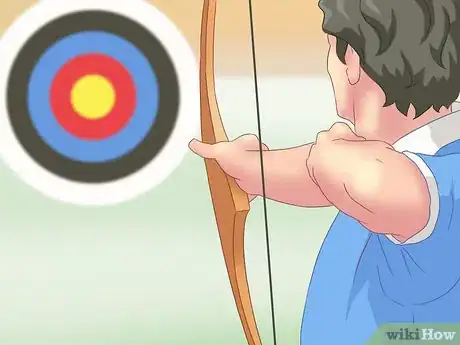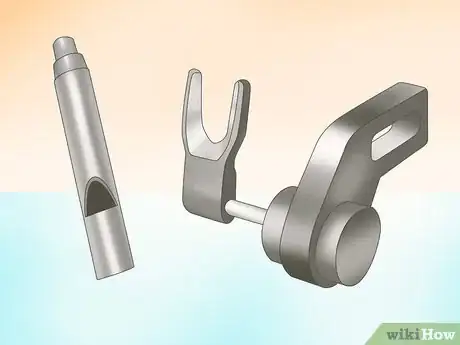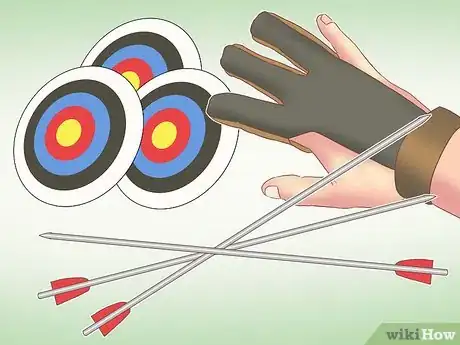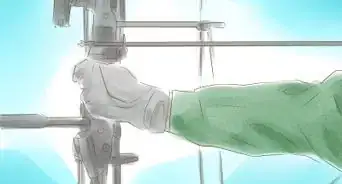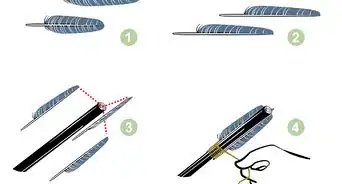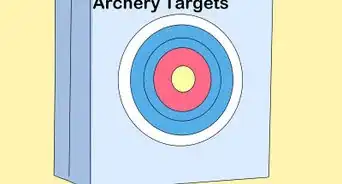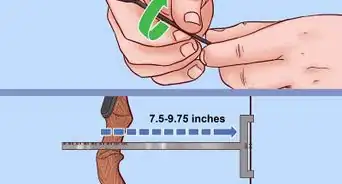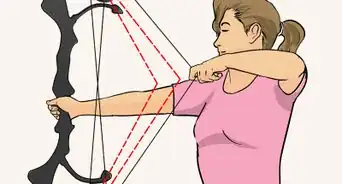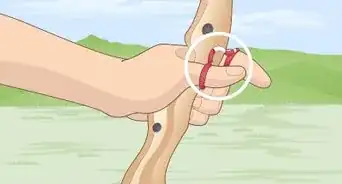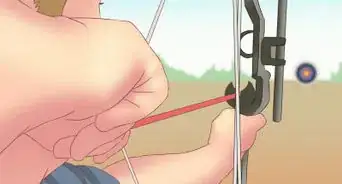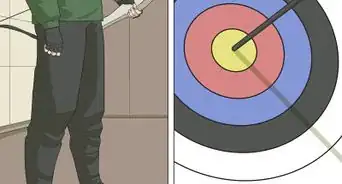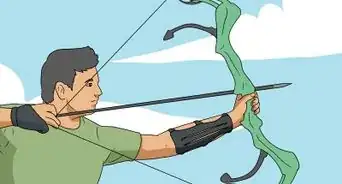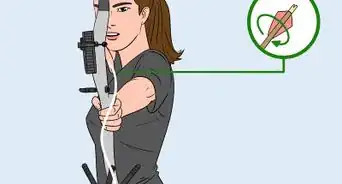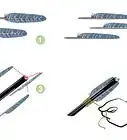This article was co-authored by wikiHow Staff. Our trained team of editors and researchers validate articles for accuracy and comprehensiveness. wikiHow's Content Management Team carefully monitors the work from our editorial staff to ensure that each article is backed by trusted research and meets our high quality standards.
This article has been viewed 70,302 times.
Learn more...
Archery is a broad activity, as you'd expect from something humans have been doing since before recorded history. Hunters, competitive target archers, and families shooting for fun all meet on the same range. The options may seem overwhelming, but remember that your first bow is an easy tool for you to practice on. It doesn't have to be a big investment, and there's no need to get your "dream bow" until you have more experience.
Steps
Choosing a Type of Bow
-
1Consider a compound bow. Compound bows use modern materials and a system of several strings and pulleys, making them the most powerful and accurate type of bow. The compact size of the bow makes it well suited to hunting. On the other hand, compound bows are complex to maintain and tend to be more expensive than other bows.
- As a beginner, choose a compound bow that has a wide weight range (resistance). This allows you to start at a low draw weight (the force required to pull back the bow) and still take powerful shots. As you become stronger, you can adjust the bow to higher draw weights to increase power.
-
2Reflect on recurves. Recurve bows are a more traditional form of bow, with just one string and a piece of wood. They are called recurves because the unstrung bow bends away from holder. Stringing it pulls the limbs back into a normal bow shape, and this extra force increases the power of the bow. Recurves are common in shooting competitions, though they can be used to hunt small animals.
- Olympic shooters use recurve bows.
Advertisement -
3Learn about longbows. If you picture Robin Hood, you probably imagine him shooting a longbow. These are classic, straight-limbed bows now used almost exclusively for target shooting. They are not as accurate as the other options, but that doesn't mean you can't have fun with them. Some target shooters consider it more exciting when a bullseye is a significant achievement.
- Flatbows have a similar shape, so much so that the two terms are often used interchangeably. The "American flatbow" design is one of the most popular.
- A large longbow can require a huge draw weight to fire, which is difficult for most beginners.
Picking a Specific Bow
-
1Ask an archery club for advice (optional). Just like other hobbyists, archers can talk for hours about the pros and cons of different bows. If you're planning to shoot at an archery range anyway, contact some archers in advance. They should be happy to help you find a beginner bow that matches what you're looking for, or at least tell you where to shop.
- Some archers may have a used bow to sell you for cheap.
-
2Find a physical store. Nothing can replace picking up and testing a bow when deciding whether to buy it. Even experienced archers choose bows that "feel right," a quality you can't figure out online. It's worth the drive to an archery, sporting, or hunting supply store.
- If you can't find a local archery store, regional archery organizations often have online stores. This can be a good way to see reviews and other information as well.
-
3Examine different materials. Plastic/fiberglass bows are cheaper, but break sooner and have a limit to how powerful they can be. Wood is more reliable, and metal is even better, but you'll be paying extra for that benefit. There's nothing wrong with getting a flimsier learning bow and moving up if you stick with the hobby.
- Recurve bows can be one solid piece, or "takedown" bows with detachable limbs. A plastic recurve bow with wooden limbs is a solid choice for a beginner. It's not too expensive, and you can upgrade the limbs slowly to increase draw weight.
- Skip this step if shopping for compound bows, which are almost exclusively metal.
-
4Choose a draw weight. The draw weight is the amount of force it takes to fully pull back the bowstring, usually written on the side of beginner bows. The biggest mistake beginners make is picking a bow with too much draw weight. If it's a strain to pull back the bowstring once, think about repeating that fifty times. Here's a rough guide for beginner draw weights, assuming average strength for your age and sex:[1]
- Adult men should try 22–28 pound recurve bows, or 40–50 pound compound bows
- Adult women should try 16–26 pound recurves, or 30–40 pound compounds.
- Teens aged 14–17 typically fire 12–16 pound recurves, or 14-22 pound compounds.
- Kids 8–13 can try 10–14 pound recurves, or 10–22 pound compounds.
- A 40 or 45 pound recurve bow is about the lightest usable for hunting, but will require practice to build up the strength to shoot accurately. This high poundage is not recommended when starting no matter how fit you are.
-
5Try before you buy. If the shop has an archery target, ask to test out the bow for a few shots. You may not be able to test accuracy all that well as a beginner, but you can see how comfortable it feels. Does it feel too light or too heavy to handle easily? Can you comfortably grip it and hold it steady? Don't be afraid to listen to your gut even if you can't say exactly what's wrong. If you don't enjoy handling your bow, you won't stay in the hobby long.
- If you've never shot a bow before, ask the shop employee for guidance. Handling the bow with the wrong form could damage the bow.
-
6Decide on the bells and whistles. You can add on all manner of sights, silencers, and stabilizers. Most dedicated archers choose to do this, but as a beginner you could save some money and leave that decision until later. Although not as common as other forms of archery, you can find "barebow" shooting competitions using recurve or longbows with no additions.
- If your bow is brand new, it probably needs an arrow rest and arrow plate installed.[2]
- Traditional shooters shoot off their knuckles or off the shelf, in which case they place a patch of fur to protect the finish from scratching.
-
7Pick out extra supplies. Naturally you'll need arrows, but that's not all. Get a bow stringer, and ask the shop employee to show you how to string your bow without risk of injuring yourself or the bow. Also pick up string wax, spare arrow fletchings, and a shooting glove/tab to protect your fingers.
- If you have a place to shoot at home, you'll need to buy a target or make your own.
Community Q&A
-
QuestionCan I learn archery if I wear glasses?
 sebastian gomezCommunity AnswerYes, of course you can. It doesn't matter if you normally wear glasses or not.
sebastian gomezCommunity AnswerYes, of course you can. It doesn't matter if you normally wear glasses or not.
Warnings
- Understand that bows are weapons. Never point an arrow at another person. Children should only fire bows under supervision.⧼thumbs_response⧽
- Never release the string without an arrow in it ("dry firing), as this can damage the bow.⧼thumbs_response⧽
- Never release with a badly nocked arrow, which can shoot the arrow sideways or in an unpredictable direction.⧼thumbs_response⧽
Things You'll Need
- Bow
- Bowstring
- Arrows
- Arrow rest
- Target
- Membership to your regional archery organization/club (this can cover insurance)
